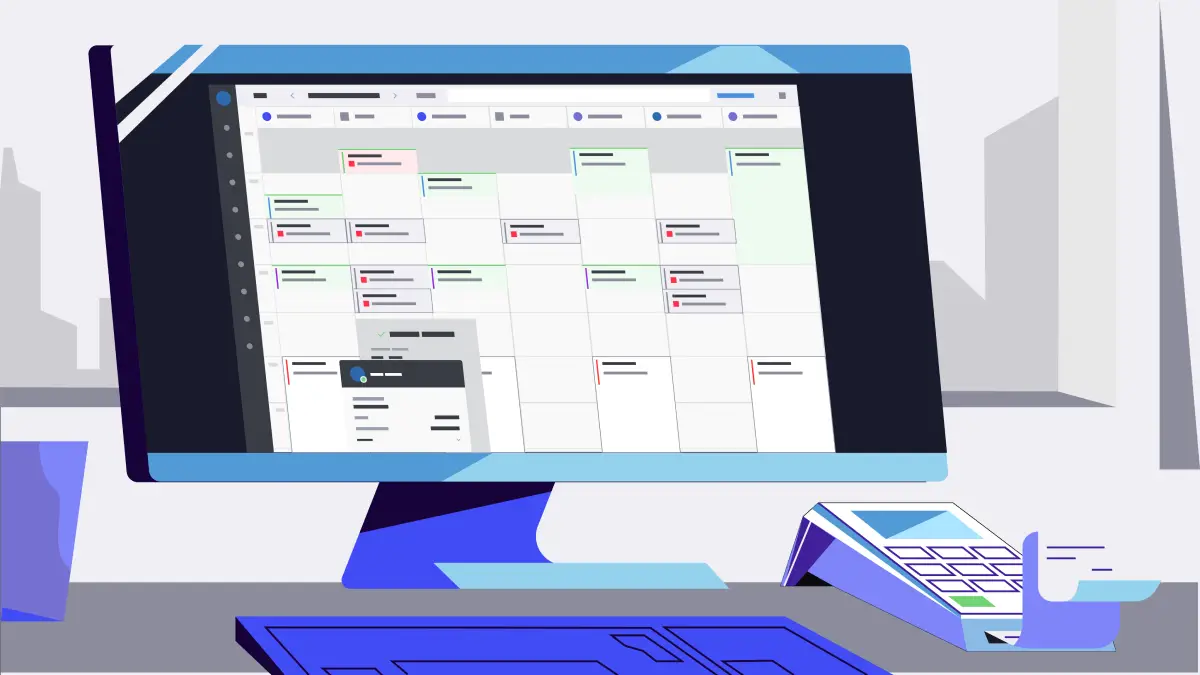
Expanding your seasonal sports programs can bring in more participants and revenue, but it also comes with challenges. When growing your programs, it’s important to

When you think about what makes a sports business successful, you often focus on the tangible aspects.
The expert coaching. A well-maintained facility with state-of-the-art equipment. A progressive training methodology.
But there’s another, often overlooked, factor that plays a crucial role in determining whether your business achieves long term success.
The answer?
Customer service.
In today’s competitive youth sports training industry, athletes and parents have an increasing number of options to choose from. The way you treat your prospects and current clients can be the deciding factor in their loyalty to your business.
Exceptional customer service isn’t just about solving problems; it’s about creating memorable experiences, building relationships, and fostering a sense of belonging. Let’s explore three steps to help you improve your customer service experience at your facility.
As cliche as it sounds, “you never get a second chance to make a first impression” is true. Countless studies have explored just how long it takes for someone to make a first impression…some research shows that it could take as little as a tenth of a second.
While many think of first impressions as the moment when a client walks through the door, the truth is, the impression often begins before they even set foot in your facility.
For many clients, their first encounter with your sports business happens online. Maybe they heard about your facility through word of mouth. Perhaps they saw an ad, or came across your site during a Google Search. This is where their initial perceptions of your brand begin to form.
We’ve previously shared tips for maintaining a sports business website that converts. A clean, well-organized sports business website is key in establishing a strong early impression of your brand, positioning you as a credible, professional operation.
Start by ensuring that your website is user-friendly. Navigation should be intuitive, with clear menus and well-organized content that allows visitors to find the information they need quickly and easily. Key details like services offered, pricing, schedules, and contact information should be prominently displayed. Additionally, your website should be mobile-responsive, ensuring that it looks and functions well on all devices, no matter where your clients are at.
Visuals are another critical component. High-quality images and videos can showcase your facility, your staff, and your programs, giving visitors a glimpse of what they can expect. Testimonials and success stories from satisfied clients can further build credibility and trust.
Finally, consider the overall aesthetic of your site. The colors, fonts, and design elements should align with your brand identity, creating a cohesive look that reinforces your professionalism. An outdated or cluttered website can leave a negative impression, suggesting that your business might not be keeping up with industry standards.
Similarly, your sports registration software is another critical touchpoint. A complicated or time-consuming registration can deter even the most enthusiastic prospective customers. If your online forms are confusing or have technical glitches, you risk losing that client before they even step through your door.
Transitioning to an online sports registration software is a game-changer. It allows clients to sign up for lessons, memberships, or other events at their convenience, from any device. But simply offering online registration isn’t enough—the process needs to be intuitive and efficient.
Payment management should also be straightforward. Offer multiple payment options and ensure that the checkout process is secure. Clients should feel confident that their financial information is protected, and the transaction should be completed with minimal friction.
By streamlining the registration process, you reduce barriers to entry, making it easier for clients to commit to your services. This not only improves the user experience but also increases your chances of converting interested visitors into loyal customers.
Beyond your website and registration process, your overall online presence plays a role in forming first impressions. Potential clients are likely to look you up on social media, read reviews, or browse through any online content associated with your business. Consistent, professional, and engaging content can build credibility and trust, while a lackluster or inconsistent presence might raise doubts about the quality of your services.
Start by claiming and updating your business profiles on review sites like Google, Yelp, and industry-specific platforms. Encourage satisfied clients to leave positive reviews, and be proactive in responding to any feedback, whether positive or negative. This shows that you value client opinions and are committed to continuous improvement.
Social media is another powerful tool for building credibility. Regularly post engaging content that highlights your facility’s offerings, showcases client success stories, and provides valuable insights related to your industry. This not only keeps your audience informed but also reinforces your expertise and commitment to helping clients achieve their goals.
Consistency is key—make sure that all your online profiles are up-to-date and reflect the same branding and messaging. This creates a cohesive image across platforms, making it easy for potential clients to recognize and trust your business.
Finally, we arrive at the in-person first impression—the moment a client steps into your facility or shows up to your training location. By this point, this athlete or parent has already formed some opinions about your business, but the in-person experience is where those opinions can be solidified or transformed.
This is where customer service comes into play.
A clean, welcoming environment, a friendly greeting, and clear communication about what they can expect will go a long way in setting a positive tone. Every interaction should reinforce the idea that they’ve made the right choice by choosing to train at your business.
This can be as simple as a staff member or front desk associate greeting them by name, or a coach taking a moment to introduce themselves and give a quick tour of the facility or spaces.
Your facility is a physical representation of your brand, and its condition speaks volumes about how you run your business. A clean, well-maintained facility not only looks appealing but also shows that you take pride in your environment and care about the comfort and safety of your athletes.
Start by ensuring that all areas of your facility, from the entrance to the training spaces, are clean and organized. This includes keeping floors free of debris, maintaining equipment in good condition, and ensuring that common areas like restrooms and waiting rooms are well-maintained.
Additionally, small gestures like offering a comfortable seating area for parents waiting during their child’s session or having water and snacks available for athletes to buy after a tough workout show that you’ve thought about their comfort and experience, and that you care about the little things.
These details contribute to a welcoming atmosphere that makes clients feel valued from the moment they walk in. When clients see that you’ve taken the time to create a pleasant and professional environment, it reinforces their decision to choose your facility.
Your staff are the face of your business, and their interactions with clients are crucial in shaping the overall experience. From your front desk personnel to the coaches and trainers, everyone should be trained to deliver exceptional customer service.
Begin by instilling the importance of a warm and friendly greeting. Clients should feel welcomed the moment they enter your facility, whether by name or with a simple smile and acknowledgment. Training staff to recognize and address clients promptly can set a positive tone for the entire visit.
Ensure that your staff is knowledgeable about your services, schedules, and any promotions or events you’re running. They should be able to answer questions confidently and provide clear instructions on what clients can expect during their time at your facility. For example, a coach might take a few minutes before a session to explain the goals for the day and what clients can expect to achieve. Or, you may take a few minutes to provide a quick tour of your spaces, helping the athletes feel comfortable and confident.
Personal connections are also important. Encourage your team to engage with clients on a personal level—ask about their day, remember their preferences, and show genuine interest in their progress. These small interactions can make clients feel valued and part of a community, rather than just another customer.
Tip: With Upper Hand, you can leave internal session notes, helping you organize and remember these details.
Lastly, empower your staff to take ownership of client satisfaction. They should feel confident in addressing any issues or concerns that arise and have the authority to make decisions that enhance the client experience. Whether it’s offering a solution to a scheduling conflict or going the extra mile to ensure a client’s comfort, your team’s proactive approach can leave a lasting positive impression.
Great customer service is often about anticipating needs before they arise. By being proactive, you can prevent potential issues and ensure that clients have a smooth and enjoyable experience from start to finish.
Start by thinking through the client journey—what are the common pain points, and how can you address them before they become problems? For example, if clients are likely to arrive with questions about where to go or what to do next, make sure that your facility has clear signage and that staff are readily available to guide them.
Consider the specific needs of different client groups. Parents dropping off their children for training may appreciate updates on their child’s progress, while adult clients might value personalized advice or encouragement during their sessions. By understanding your clients’ needs, you can tailor your approach to make them feel supported and cared for.
Another aspect of anticipating needs is being prepared for the unexpected. This could mean having extra towels or water bottles on hand, offering flexible scheduling or payment options, or simply being ready to accommodate last-minute changes. When clients see that you’re prepared and willing to adapt to their needs in these unforeseen circumstances, it builds trust and confidence in your business.
The customer experience doesn’t end when clients leave your facility. Following up with them after their visit is an essential step in reinforcing the positive impression you’ve worked hard to create. This final step in the customer journey is about maintaining the connection, gathering feedback, and encouraging long-term loyalty.
A well-timed follow-up can make a lasting impact on how clients perceive your business. Sending a thank-you email or a quick message after their visit shows that you appreciate their business and care about their experience. This simple gesture can turn a good experience into a great one and set the stage for future interactions.
In your follow-up communication, be personal and specific. Mention something particular about their visit—whether it was their athlete’s first day at camp, a milestone they achieved in training, or a friendly chat you had. This personalization shows that you see them as an individual, not just a customer.
Additionally, use this opportunity to provide valuable information. You might include a recap of their session, tips for continued progress, or details about upcoming events they might be interested in. Offering something of value in your follow-up communication reinforces your commitment to their success and keeps them engaged with your business.
Gathering and responding to feedback is a crucial part of the follow-up process. Ask clients how their experience was and whether there’s anything you could do to improve. This shows that you’re open to constructive criticism and dedicated to continuous improvement.
When clients provide feedback, respond promptly and thoughtfully. If they had a positive experience, thank them and let them know you appreciate their kind words. If there were any issues, acknowledge their concerns and outline the steps you’re taking to address them. This responsiveness not only resolves any lingering concerns but also demonstrates that you’re committed to providing the best possible experience.
Over time, the feedback you gather can provide valuable insights into areas where your business excels and where there’s room for improvement. Use this information to refine your services and ensure that you’re consistently meeting or exceeding client expectations.
Resource: Get 9 free Marketing Survey templates you can steal and use for your business.
The final goal of your follow-up process is to build long-term relationships with your clients. Consistent communication through sending emails or newsletters, personalized updates, and other marketing emails with special offers can keep your business top-of-mind and encourage repeat visits. Using a sports management system like Upper Hand can help you manage these ongoing interactions.
Consider implementing loyalty programs or referral incentives to reward repeat business and encourage clients to spread the word about your facility. When clients feel valued and see tangible benefits to staying connected with your business, they’re more likely to become loyal advocates.
Customer service is the backbone of your sports business’s long-term success. By focusing on making a strong first impression, delivering a welcoming in-person experience, and following up to reinforce positive impressions, you create an environment where clients feel valued and supported. This approach not only enhances client satisfaction but also fosters loyalty, turning one-time visitors into lifelong advocates of your brand.
By implementing these steps, you’ll set your sports facility apart in a competitive market, ensuring that clients choose your business not just for the expert training, but for the memorable experience you provide. In the end, it’s the relationships you build through outstanding customer service that will sustain and grow your sports business for years to come.

Expanding your seasonal sports programs can bring in more participants and revenue, but it also comes with challenges. When growing your programs, it’s important to

Running a sports training business comes with its seasonal highs and lows. Perhaps as kids return to school, you notice the demand for programs dips.